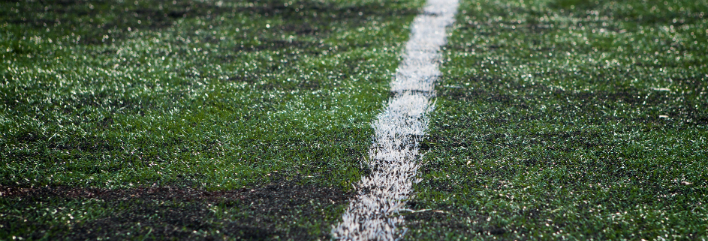Sports stars and amateur players who play on crumb rubber pitches could be at risk from a “remarkable” lack of occupational health checks, according to a new paper from the University of Stirling.
The health of some people who work with surfaces made from recycled tyres – such as manufacturers, suppliers, installers and maintainers – may also be jeopardised due to inadequate monitoring, the research suggests.
Professor Andrew Watterson, of the University’s Faculty of Health Sciences and Sport, said it appears that risks are being “downplayed” despite well-documented links between rubber production and illness, bans on landfill disposal of used tyres and concerns about the health of sports people and others who use such surfaces.

Professor Andrew Watterson says more health checks are required on users of crumb rubber pitches.
He said: “The study has identified a need for more, better and clearer information about hazards and risks linked to some crumb rubber pitches.”
Used by millions of people worldwide, indoor and outdoor pitches made from artificial grass may be filled with crumb rubber, which can contain hazardous chemicals at very low levels. Due to data gaps and limitations of earlier studies, the risks posed by such chemicals are constantly being re-assessed and lower control limits applied.
The UK regulatory bodies responsible for health and safety are local authorities for private leisure facilities and the Health and Safety Executive (HSE) for council-run sports facilities. The regulators did not conduct any checks on the exposure of professional and amateur sports people to dust and fumes when using 3G and 4G pitches. Nor had they apparently received any reports of such investigations.
The HSE, which also covers crumb rubber factories, conducted just two checks on occupational health issues of factories – involving noise and dust – in just five visits involving artificial crumb rubber surfaces over a 10-year period. However, many more safety visits occurred in that period. Since 2007, it has carried out no inspections, monitoring or enforcement action on chemicals – covered by EU regulations - present in crumb rubber and artificial turf.
Monitoring
Professor Watterson, head of the Occupational and Environmental Health Research Group, said the lack of health monitoring of sportspeople and crumb rubber production and maintenance workers was “remarkable”, given well-publicised concerns.
He said: “The HSE and local authority inspectors clearly have an important role to play here.
“We hope that our research results in more frequent, independent scrutiny of the industry by HSE and of private leisure facilities by local authorities and encourages the industry and regulators to increase and improve the information available to users along with more extensive health surveillance and monitoring.”
Professor Watterson analysed crumb rubber data sheets, examined HSE information relating to safety and health inspections of crumb rubber plants, gathered information on workers and examined health impact assessments.
The study discovered toxicity information included in safety sheets varies significantly depending on the date of installation and the manufacturer, with physical and chemical hazard properties sometimes sparse and, in some cases, not present at all.
The analysis also highlighted that, during the lifespan of a surface, crumb rubber is often topped up by different suppliers, with the source of the crumb rubber sometimes missing from data sheets.
Anecdotal evidence from those working in the industry indicates serious concerns about the occupational health of workers, and information sheets distributed to sports staff “almost exclusively” seem to focus on maintenance and do not address health and safety issues, it found.
Professor Watterson is now calling for “proper” cumulative health impact assessments to be carried out, looking at the risk of hazardous chemicals, including rubber crumb.
He said: “There have already been calls for tougher controls on some of the chemicals that may be present in crumb rubber and a cautious approach is wise.”
The paper, Artificial turf: contested terrains for precautionary public health with particular reference to Europe?, has been published in the International Journal of Environmental Research and Public Health.
Background information
Media enquiries to Greg Christison, Communications Officer, on 01786 466 687 or greg.christison@stir.ac.uk

